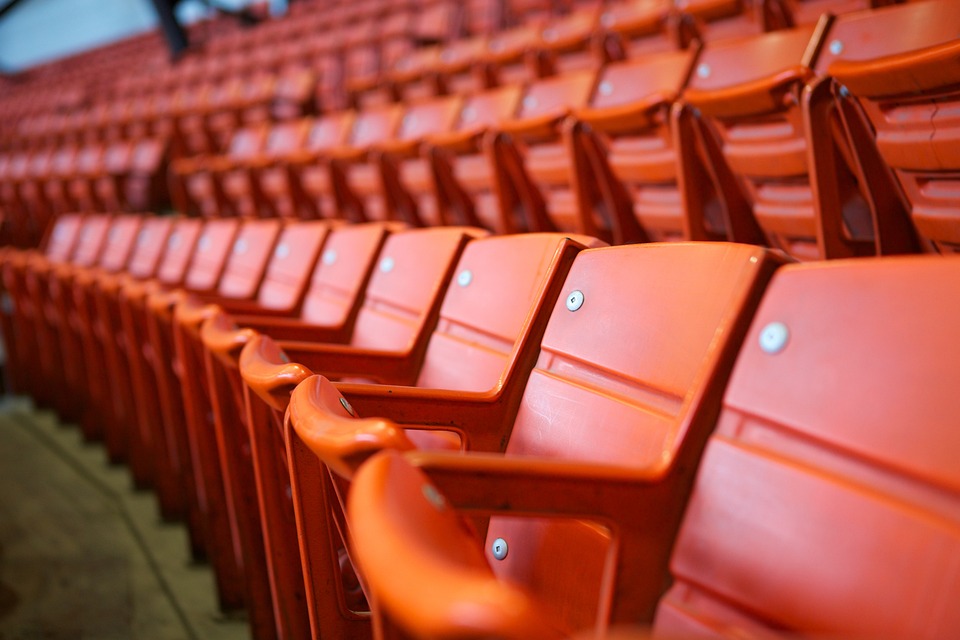The Road to Shanghai Begins: Athletes Launch Preparation for International Competition
With just over five months since the conclusion of the Beijing International Event and six months since the announcement of Shanghai as the host city for SEMO’s International Sports Event 2026, our region’s athletes have already begun their focused preparation. The journey to international competition requires meticulous planning, strategic training cycles, and comprehensive support systems. Today, we take an inside look at how SEMO athletes are laying the groundwork for success in Shanghai.
Strategic Preparation Timeline
The 18-month preparation window between the host city announcement and the January 2026 competition represents a critical period for athletic development. SEMO’s High Performance Director, Dr. James Wilson, explains the strategic approach:
“International competition preparation isn’t simply about training harder—it’s about training smarter with precise periodization and targeted development phases,” notes Wilson. “We’ve worked with coaches across all sports to develop structured preparation timelines that optimize peak performance for January 2026.”
This periodized approach typically includes:
-
Foundation Phase (Current through October 2025): Building fundamental fitness, addressing technical weaknesses, and establishing baseline performance metrics
-
Development Phase (November 2025-April 2026): Increasing training specificity, progressive intensity, and competition-specific adaptations
-
Competition Phase (May-September 2026): Integrating regular competition to hone tactical skills and mental preparation
-
Specialization Phase (October-December 2026): Fine-tuning performance elements and tapering appropriately for peak condition
“The current foundation phase is crucial though often underappreciated,” explains Wilson. “The work athletes do now—developing resilience, addressing weaknesses, building capacity—creates the platform that enables specialized preparation later in the cycle.”
Technical Innovations in Preparation
SEMO has invested significantly in preparation resources designed specifically for the Shanghai event. The High Performance Center now features:
Climate Adaptation Chamber
The specialized environmental training space simulates Shanghai’s January conditions:
-
Temperature range matching historical averages (2-10°C/35-50°F)
-
Humidity controls replicating Shanghai’s typical winter moisture levels
-
Air quality simulation for respiratory adaptation
“Environmental adaptation can provide a competitive edge,” notes Exercise Physiologist Dr. Elena Martinez. “Athletes who acclimate to competition conditions in advance typically experience improved comfort, reduced stress response, and optimized performance.”
Athletes are currently conducting one session weekly in the chamber, gradually increasing exposure as the competition approaches.
Sport-Specific Technical Analysis
Advanced motion capture and performance analysis tools allow coaches to identify technical refinements specifically relevant to the Shanghai venues:
-
3D biomechanical assessment comparing current technique to optimal models
-
Venue-specific simulations based on facility specifications
-
Competition scenario modeling for tactical preparation
Swimming coach Michael Chen explains the impact: “Having detailed specifications of the Shanghai Aquatics Center allows us to tailor our training precisely. The pool dimensions, wall design, starting block configuration—all these elements influence technique optimization.”
Recovery Enhancement Center
Recognizing that optimal recovery enables more productive training, SEMO has expanded recovery resources including:
-
Contrast therapy facilities with precise temperature control
-
Compression therapy systems for enhanced circulation
-
Sleep optimization resources and monitoring
-
Nutrition timing stations for immediate post-training refueling
“Recovery isn’t passive—it’s an active part of preparation,” emphasizes Recovery Specialist Sarah Johnson. “Athletes who systematically implement recovery protocols can maintain higher training quality and volume, accelerating their preparation.”
Athlete Perspectives on Preparation
For athletes, the announcement of Shanghai as the host city transformed abstract training goals into concrete preparation targets.
Michael Rodriguez - Swimming
For national champion swimmer Michael Rodriguez, the Shanghai preparation represents a new level of commitment:
“When Shanghai was announced, my entire perspective shifted,” explains Rodriguez. “Suddenly, every training session, meal choice, and recovery practice had clear purpose—performing at my best in that specific pool on that specific date.”
Rodriguez has implemented significant lifestyle changes to support his preparation:
-
Moving closer to the training facility to eliminate commute time
-
Working with a sport nutritionist to optimize fueling strategies
-
Reducing social commitments to prioritize recovery
-
Implementing systematic sleep monitoring and optimization
“My coach and I have identified specific technical elements that need refinement for Shanghai,” notes Rodriguez. “The underwater phase of my breaststroke has become a major focus, with dedicated technical sessions twice weekly.”
Elena Park - Track and Field
Middle-distance runner Elena Park is taking a data-driven approach to her Shanghai preparation:
“We’ve established baseline metrics across various performance indicators,” Park explains. “Every four weeks, we conduct comprehensive assessments to track progress and adjust training accordingly.”
Park’s preparation includes elements beyond traditional running sessions:
-
Altitude training blocks to enhance oxygen utilization
-
Technical refinement focused on running economy
-
Race simulation sessions replicating tactical scenarios
-
Mental skills training with visualization of the Shanghai track
“The Shanghai announcement created a clear timeline,” notes Park. “Instead of general improvement, we’re working backward from January 2026, with specific performance targets for each preparation phase.”
Team Perspective - Volleyball
For team sports, Shanghai preparation involves both individual development and collective coordination. National volleyball team captain James Chen provides insight into their approach:
“We’re balancing individual physical preparation with team tactical development,” explains Chen. “Each player has personalized fitness programs while our court sessions focus on system refinement and team cohesion.”
The volleyball preparation strategy includes:
-
Position-specific physical development protocols
-
Video analysis of potential Shanghai opponents
-
Scheduled competition against varied playing styles
-
Leadership development and team building activities
“International competition requires exceptional team chemistry,” notes Chen. “Beyond physical preparation, we’re investing in communication systems and role clarity that will serve us in high-pressure moments.”
Adaptive Sport Preparation
Paralympic hopeful Sarah Williams highlights the specialized preparation requirements for adaptive athletes:
“Equipment optimization becomes even more crucial for international competition,” explains Williams, who competes in wheelchair racing. “We’re working with engineers to make micro-adjustments to my racing chair, finding the perfect balance between stability and speed.”
Williams’ preparation includes:
-
Weekly equipment testing and refinement
-
Classification-specific training methodologies
-
Technical adaptations based on Shanghai track specifications
-
Logistics planning for equipment transport and maintenance
“The Shanghai announcement gave us the detailed venue information needed to optimize equipment configuration,” notes Williams. “Those small refinements can make significant performance differences.”
Support Systems Enabling Preparation
Successful international preparation extends far beyond training sessions, requiring comprehensive support systems:
Performance Health Team
A multidisciplinary health team supports each athlete’s preparation:
-
Sports medicine physicians providing ongoing health monitoring
-
Physical therapists conducting regular movement assessments
-
Strength coaches designing periodized development programs
-
Nutritionists implementing fueling strategies for each preparation phase
“Preventative health management is essential during intensive preparation,” explains Medical Director Dr. David Park. “Regular monitoring allows us to address small issues before they become significant setbacks.”
Mental Performance Services
Recognizing the psychological demands of international competition, SEMO has expanded mental performance resources:
-
Individual consultations with sport psychologists
-
Pressure training protocols simulating competition stressors
-
Mindfulness and focus training
-
Tactical decision-making under fatigue
“Technical skills falter under pressure if mental skills aren’t equally developed,” notes Sport Psychologist Dr. Maria Gonzalez. “Systematic mental preparation creates resilience that serves athletes throughout the competition cycle.”
Performance Analytics
Data-informed decision making guides the preparation process:
-
Training load monitoring ensuring appropriate progression
-
Recovery tracking to optimize training responses
-
Technical analysis identifying efficient movement patterns
-
Competitive performance metrics highlighting tactical patterns
“Analytics don’t replace coaching expertise—they enhance it,” explains Performance Analyst Jason Kim. “The data provides objective feedback that helps athletes and coaches make informed adjustments throughout the preparation cycle.”
Qualification Pathways and Selection Process
While preparation has begun in earnest, athletes still face the challenge of securing their spots for Shanghai:
Qualification Events
Key qualification opportunities include:
-
Regional Championships (September-October 2025)
-
Selection Trials (November 2025)
-
Performance Standards Period (through December 15, 2025)
“The qualification process creates a natural competitive progression,” notes Selection Committee Chair Elena Torres. “Athletes build through preparatory competitions toward peak qualifying performances.”
Selection Criteria
The selection process balances objective metrics with strategic considerations:
-
Performance standards established for each event
-
Head-to-head results in key competitions
-
International experience and previous results
-
Strategic team composition factors
-
Demonstrated preparation commitment
“Selection transparency is crucial for athlete confidence during preparation,” explains Torres. “All criteria are published and regularly reviewed with athletes and coaches to ensure clear understanding.”
Preparing for the Shanghai Experience
Beyond physical preparation, SEMO is helping athletes prepare for the unique aspects of competing in Shanghai:
Cultural Preparation
To enhance comfort in the host city, athletes receive:
-
Cultural orientation sessions about Shanghai
-
Basic Mandarin language instruction for essential communication
-
Information about local customs and etiquette
-
Dietary guidance for navigating local cuisine
“Cultural comfort contributes to competitive comfort,” explains Cultural Liaison Sarah Chen. “Athletes who feel confident navigating the host environment can focus more completely on their performance.”
Logistical Familiarity
Reducing unknowns helps athletes maintain focus:
-
Detailed venue information including virtual tours
-
Transportation systems explanation and planning
-
Accommodation specifications and preparation
-
Competition schedule frameworks and planning
“International competition involves numerous potential distractions,” notes Logistics Coordinator Michael Lee. “Familiarizing athletes with these elements in advance allows them to maintain performance focus during the event.”
The Broader Preparation Ecosystem
While elite athletes pursuing Shanghai selection receive comprehensive support, SEMO has implemented several initiatives supporting broader athletic development:
Next Generation Program
Recognizing that international exposure benefits developing athletes:
-
Junior athletes train alongside Shanghai hopefuls
-
Educational sessions about international preparation
-
Mentorship connections with experienced competitors
-
Development competitions with international format
“Not every athlete in the program will qualify for Shanghai 2026,” notes Development Director Marcus Johnson. “But the preparation experience accelerates development regardless of selection outcome.”
Coach Development Initiative
Enhancing coaching expertise supports athlete preparation:
-
Technical workshops specific to international competition
-
Periodization planning sessions for coaches
-
Mental performance coaching techniques
-
International competition logistics education
“Coaches are the primary architects of athletic preparation,” explains Coach Education Coordinator Elena Park. “Investing in coach development multiplies our impact across numerous athletes.”
Looking Ahead: Key Preparation Milestones
As the road to Shanghai continues, several key milestones shape the preparation journey:
-
August-September 2025: Foundation phase evaluation and program adjustments
-
October 2025: Regional qualification events
-
November 2025: Selection trials and team announcements
-
December 2025: Final preparation camp and team building
-
Early January 2026: Advance team departure for Shanghai
-
January 2026: SEMO International Sports Event in Shanghai
“Each milestone provides both evaluation opportunities and motivation boosters,” notes High Performance Director Wilson. “The progressive nature of preparation helps athletes maintain focus throughout the extended journey.”
Community Support for Shanghai-Bound Athletes
The broader community plays a vital role in supporting international preparation:
-
Local businesses providing internship opportunities with flexible schedules
-
Educational institutions accommodating training requirements
-
Community fundraising supporting preparation expenses
-
Hometown supporters organizing encouragement initiatives
“International competition preparation requires extraordinary commitment,” concludes SEMO President Dr. Diana Chen. “By supporting these athletes throughout their journey, our community contributes to their success while celebrating the dedication and perseverance they demonstrate daily.”
For athletes interested in learning more about Shanghai preparation resources, visit semo-sports.com/shanghai2026 or contact the High Performance team at performance@semo-sports.com.

.png)





